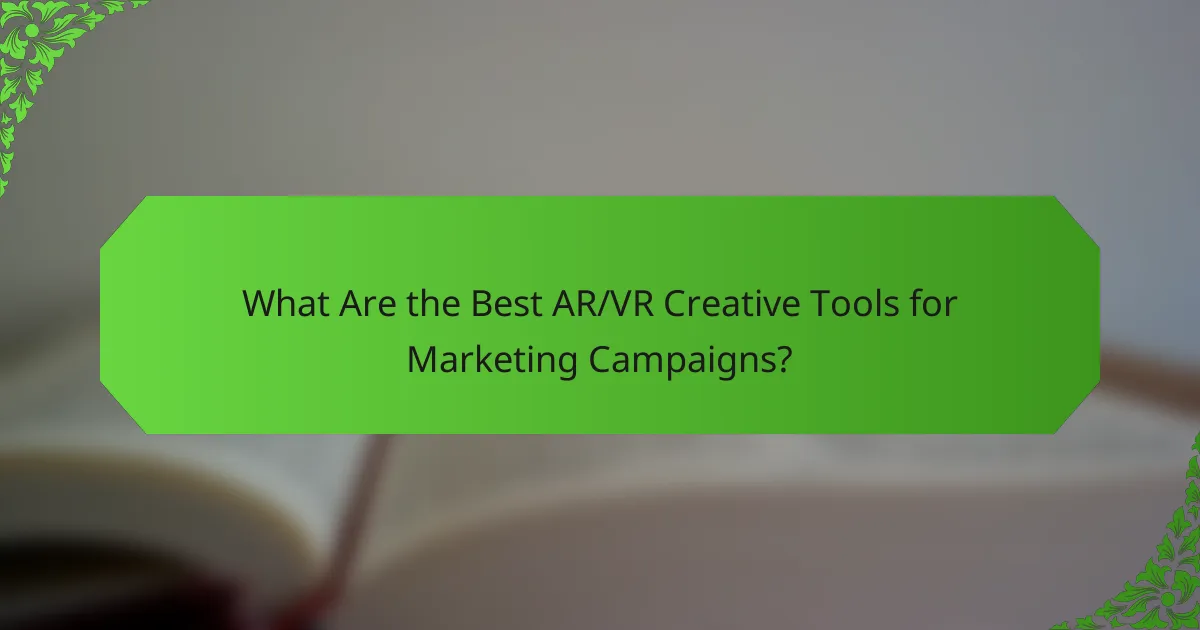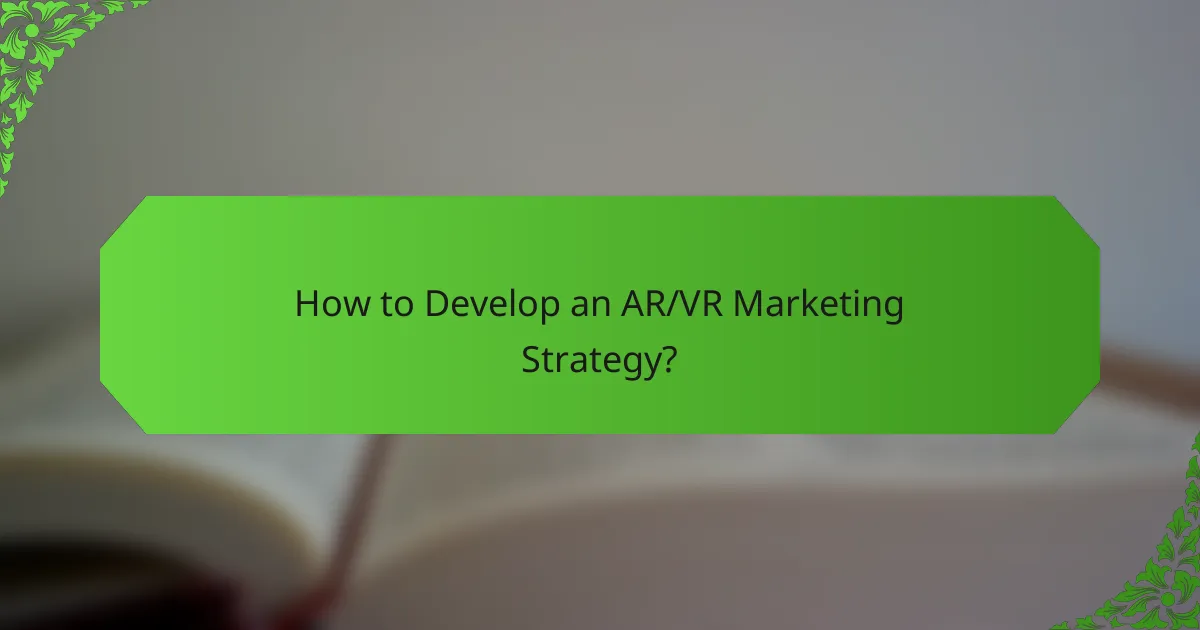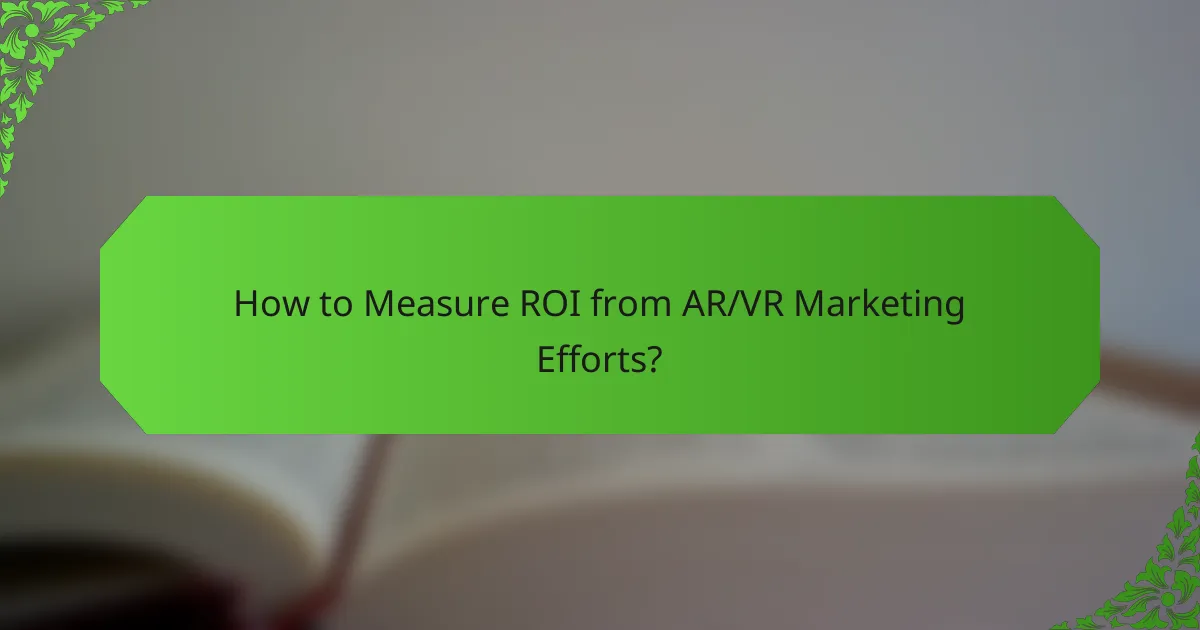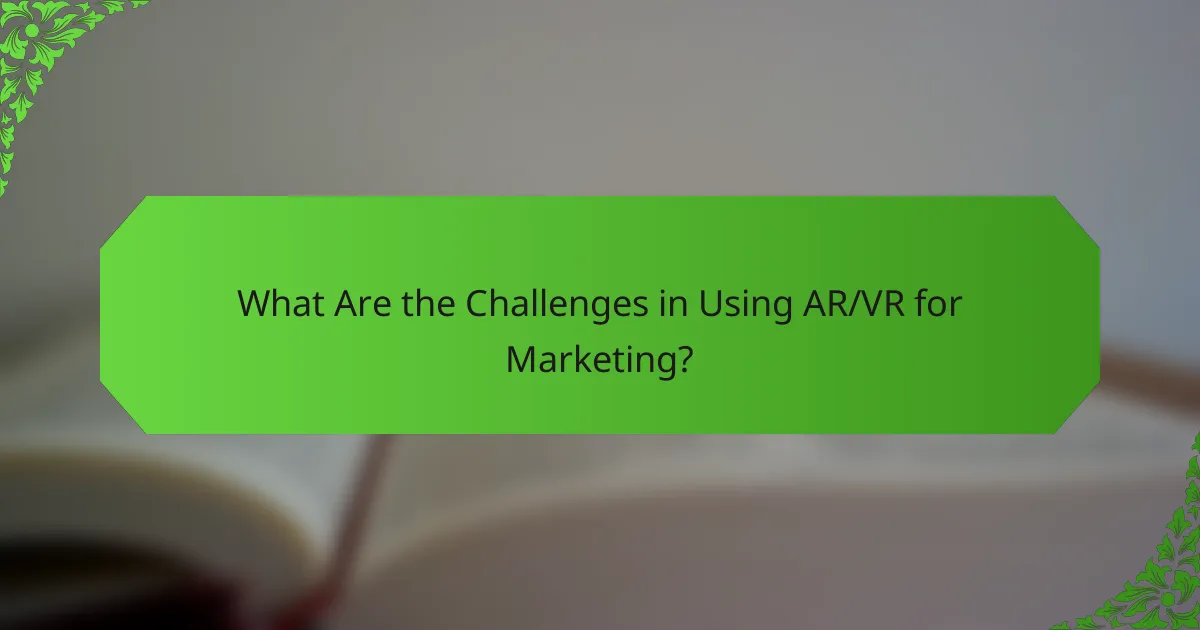Augmented Reality (AR) and Virtual Reality (VR) are transforming marketing campaigns by providing innovative tools that enhance user engagement and maximize return on investment (ROI). By leveraging these immersive technologies, marketers can create captivating experiences that effectively communicate brand messages and resonate with their target audience.

What Are the Best AR/VR Creative Tools for Marketing Campaigns?
The best AR/VR creative tools for marketing campaigns include software that enhances user engagement and drives return on investment (ROI). These tools enable marketers to create immersive experiences that captivate audiences and effectively convey brand messages.
Adobe Aero
Adobe Aero is a user-friendly platform designed for creating augmented reality experiences without extensive coding knowledge. It allows marketers to design interactive content that can be easily integrated into existing Adobe workflows, making it ideal for those already familiar with Adobe products.
Consider using Adobe Aero for campaigns that require quick prototyping or for brands looking to enhance their storytelling. The tool supports various file formats and can be used across multiple devices, ensuring broad accessibility for users.
Unity
Unity is a powerful game development engine that also excels in creating AR and VR experiences. It offers extensive features for 3D modeling, animation, and real-time rendering, making it suitable for complex marketing campaigns that demand high-quality visuals.
When using Unity, marketers should be aware of the learning curve associated with the software. However, its versatility allows for the development of highly engaging applications that can significantly boost user interaction and brand loyalty.
Blender
Blender is an open-source 3D modeling tool that provides comprehensive features for creating stunning visuals. It is particularly useful for marketers looking to develop unique assets for AR and VR campaigns without incurring high software costs.
While Blender has a steeper learning curve, it offers a vast community and numerous tutorials to help users get started. Marketers can leverage Blender’s capabilities to create custom animations and models that stand out in competitive campaigns.
Spark AR
Spark AR is a platform developed by Facebook for creating augmented reality effects for social media. It is particularly effective for brands targeting younger audiences on platforms like Instagram and Facebook, where AR filters can enhance user engagement.
Marketers should focus on creating visually appealing and shareable content to maximize reach. Spark AR’s integration with social media allows for easy distribution, making it a practical choice for campaigns aiming for viral potential.
Vuforia
Vuforia is a robust AR development platform that specializes in image recognition and tracking. It is ideal for brands looking to create interactive experiences that blend digital content with the physical world, such as product packaging or in-store displays.
When using Vuforia, marketers should consider the importance of high-quality images and reliable tracking to ensure a seamless user experience. This tool is particularly effective in retail environments where engaging customers at the point of sale can lead to increased conversions.

How to Develop an AR/VR Marketing Strategy?
To develop an effective AR/VR marketing strategy, start by understanding your goals and how immersive technologies can enhance customer engagement. This approach will help you create targeted campaigns that resonate with your audience and drive measurable results.
Define target audience
Identifying your target audience is crucial for a successful AR/VR marketing strategy. Consider demographics such as age, interests, and technology usage to tailor your content effectively. For example, younger consumers may be more receptive to AR experiences, while older demographics might prefer simpler VR applications.
Utilize market research tools and customer feedback to refine your audience profile. This will ensure that your AR/VR campaigns address the specific needs and preferences of your intended users, leading to higher engagement rates.
Set clear objectives
Establishing clear objectives is essential for measuring the success of your AR/VR marketing efforts. Define what you want to achieve, whether it’s increasing brand awareness, generating leads, or boosting sales. Setting specific, measurable goals will provide a benchmark for evaluating your campaign’s effectiveness.
For instance, you might aim for a 20% increase in engagement or a specific number of downloads for an AR app. Align your objectives with overall business goals to ensure that your AR/VR initiatives contribute to broader marketing strategies.
Choose appropriate platforms
Selecting the right platforms for your AR/VR marketing campaigns is vital for reaching your audience effectively. Popular platforms include social media channels like Instagram and Snapchat for AR filters, and dedicated VR environments like Oculus for immersive experiences. Consider where your target audience spends their time online.
Evaluate the technical requirements and user experience of each platform to ensure compatibility with your campaign goals. Additionally, keep an eye on emerging technologies and platforms to stay ahead of trends and maximize your marketing impact.

What Are the Key Engagement Metrics for AR/VR Campaigns?
The key engagement metrics for AR/VR campaigns include interaction rates, time spent in experience, and conversion rates. These metrics help marketers evaluate the effectiveness of their campaigns and understand user behavior in immersive environments.
Interaction rates
Interaction rates measure how often users engage with the AR/VR content. This can include actions like tapping, swiping, or using voice commands. A higher interaction rate indicates that users find the experience engaging and are willing to explore it further.
To improve interaction rates, consider incorporating gamification elements or interactive storytelling. For example, a fashion brand might allow users to virtually try on clothes, prompting them to interact more with the experience.
Time spent in experience
Time spent in experience refers to the duration users engage with the AR/VR content. Longer engagement times often correlate with higher user interest and satisfaction. Aiming for a time range of several minutes can indicate a successful campaign.
To enhance this metric, create captivating narratives or offer valuable information that keeps users immersed. For instance, a travel agency could use VR to showcase a destination, encouraging users to explore various aspects of the location over an extended period.
Conversion rates
Conversion rates track the percentage of users who take a desired action after engaging with the AR/VR content, such as making a purchase or signing up for a newsletter. A strong conversion rate is essential for assessing the return on investment (ROI) of the campaign.
To boost conversion rates, ensure a seamless transition from the AR/VR experience to the purchasing process. For example, integrating a direct link to an online store within the experience can facilitate immediate purchases, increasing the likelihood of conversion.

How to Measure ROI from AR/VR Marketing Efforts?
Measuring ROI from AR/VR marketing efforts involves evaluating the financial return against the investment made in these technologies. Key metrics include cost per acquisition, customer lifetime value, and sales uplift, which provide insights into the effectiveness and profitability of AR/VR campaigns.
Cost per acquisition
Cost per acquisition (CPA) is a critical metric that reflects the total cost of acquiring a new customer through AR/VR marketing initiatives. To calculate CPA, divide the total marketing spend by the number of new customers gained during a specific period. For instance, if a campaign costs $10,000 and attracts 100 new customers, the CPA would be $100.
When analyzing CPA, consider the unique aspects of AR/VR experiences that may influence costs, such as technology investment and content creation. It’s essential to benchmark your CPA against industry standards to assess performance effectively.
Customer lifetime value
Customer lifetime value (CLV) estimates the total revenue a business can expect from a customer throughout their relationship. In the context of AR/VR marketing, understanding CLV helps gauge the long-term benefits of engaging customers through immersive experiences. A higher CLV indicates that customers are more likely to return and spend more, justifying the initial investment in AR/VR.
To calculate CLV, multiply the average purchase value by the number of purchases per year and the average customer lifespan in years. For example, if a customer spends $200 annually over five years, their CLV would be $1,000. This metric can guide budget allocation for AR/VR campaigns.
Sales uplift
Sales uplift measures the increase in sales attributed to AR/VR marketing efforts compared to a baseline. This metric is vital for understanding the direct impact of immersive experiences on revenue generation. To calculate sales uplift, compare sales figures before and after implementing AR/VR campaigns, adjusting for seasonal trends and other influencing factors.
For example, if sales increased from $50,000 to $65,000 after an AR campaign, the sales uplift would be 30%. Tracking this metric helps businesses determine the effectiveness of their AR/VR strategies and make informed decisions about future investments.

What Are the Challenges in Using AR/VR for Marketing?
Using AR and VR in marketing presents several challenges, including high development costs, technical limitations, and the need for user education. Brands must navigate these obstacles to effectively engage their audience and achieve a positive return on investment.
High Development Costs
The cost of creating AR and VR content can be significant, often requiring substantial investment in technology and skilled personnel. Businesses should budget for development, testing, and ongoing maintenance, which can range from thousands to millions of dollars depending on the complexity of the project.
To mitigate costs, brands can consider partnering with specialized agencies or utilizing existing platforms that offer AR/VR capabilities. This approach can lower initial expenses while still providing engaging experiences.
Technical Limitations
Technical limitations, such as device compatibility and internet connectivity, can hinder the effectiveness of AR and VR marketing campaigns. Not all consumers have access to the latest devices or high-speed internet, which can restrict audience reach.
Brands should design experiences that are accessible on a variety of devices, including smartphones and tablets. Testing across different platforms can help ensure a seamless user experience, regardless of the technology used.
User Education and Adoption
Many consumers are still unfamiliar with AR and VR technologies, which can lead to hesitance in engagement. Educating the audience about how to use these tools effectively is essential for maximizing participation in marketing campaigns.
Implementing simple tutorials or guides within the AR/VR experience can help users navigate the technology. Additionally, promoting the benefits of engaging with AR/VR content can encourage adoption and increase overall campaign success.